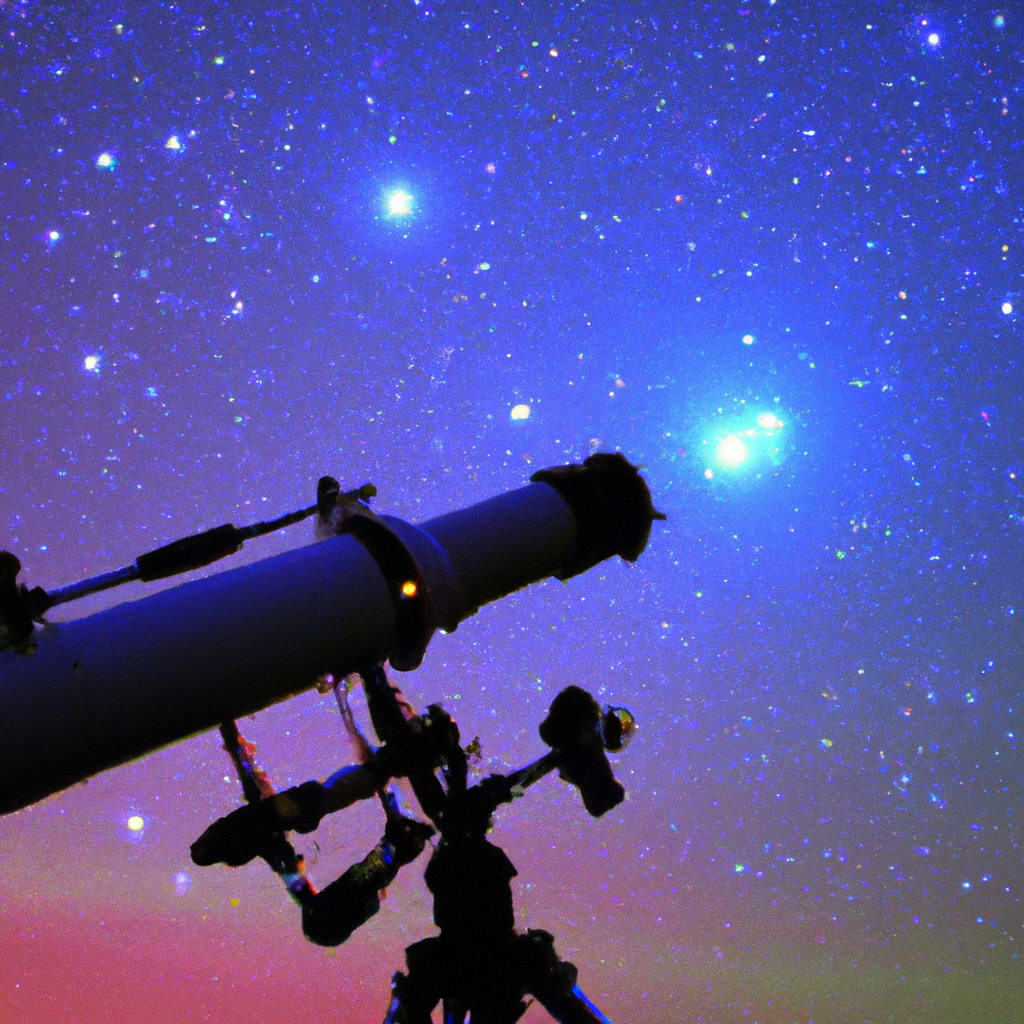So, you’re curious about the significance of telescope aperture size, huh? Well, picture this: you’re standing under a starry night sky, gazing up at the vast expanse above you. Now, imagine being able to see even further, to uncover secrets of the universe that were previously hidden. Fascinating, isn’t it? In this article, we’ll explore why telescope aperture size plays a crucial role in unlocking the wonders of space, allowing us to glimpse far-off galaxies and unravel the mysteries of celestial bodies. Prepare to embark on a cosmic journey as we unravel the importance of this vital component in the world of astronomy.
Table of Contents
Understanding Telescope Aperture
Definition of Aperture Size
In the world of telescopes, the term “aperture” refers to the diameter of the main optical component or lens that captures the incoming light. It is essentially the opening through which the light enters the telescope. The size of the aperture plays a crucial role in determining the overall performance and capabilities of a telescope.
Measurement of Aperture
Aperture size is typically measured in millimeters (mm) or inches (in). It represents the diameter of the telescope’s primary mirror or lens. For example, a telescope with an aperture size of 100mm means that its main lens or mirror has a diameter of 100mm.
Types of Telescope Apertures
Telescope apertures come in various forms, including refractors, reflectors, and compound telescopes. Refractors use lenses to gather and focus light, while reflectors use mirrors. Compound telescopes, also known as catadioptric telescopes, combine the use of lenses and mirrors for their optical systems. Each type of aperture has its own benefits and drawbacks, and choosing the right one depends on your specific observing needs and preferences.
Light Gathering Capability
Relation between Aperture and Light Gathering
The aperture size directly determines the light gathering capability of a telescope. A larger aperture allows more light to enter the telescope, providing brighter and clearer images. This is because a larger aperture can collect more photons from distant celestial objects. A telescope with a larger aperture is, therefore, better equipped to capture faint objects and distant stars that may be invisible to the naked eye.
Significance of Light Gathering Power
The ability to gather light effectively is crucial in astronomy as it directly affects the visibility of celestial objects. A larger aperture enhances the telescope’s light gathering ability, making it easier to observe dimmer objects and details that might be missed with a smaller telescope. Whether you are observing distant galaxies or studying the craters on the Moon, a telescope with a larger aperture will greatly enhance your viewing experience by allowing you to see more intricate features and fine details.

Image Resolution
How Aperture Affects Image Resolution
Aperture plays a significant role in determining the image resolution of a telescope. Image resolution refers to the level of detail and sharpness captured by the telescope. A larger aperture can resolve finer details, resulting in higher image resolution. This is due to the fact that a larger aperture creates a narrower cone of light, allowing for more precise focusing and sharper images.
Importance of High Resolution Images
high-resolution images obtained through a telescope are invaluable in the field of astronomy. They enable astronomers and researchers to study celestial objects in great detail, revealing intricate features, structures, and phenomena. Whether it is observing the rings of Saturn or the intricate craters on the Moon, a telescope with a larger aperture will provide clearer and more detailed images, enhancing the overall understanding and knowledge of the cosmos.
Ability to Detect Faint Objects
Aperture Size and Detecting Faint Objects
The size of the aperture directly impacts a telescope’s ability to detect faint objects. Faint objects, such as distant galaxies, nebulae, or dimly lit stars, require a significant amount of light collection to become visible. A larger aperture gathers more light, significantly improving the visibility of these faint objects. With a larger aperture, you can explore deeper into the universe and observe celestial wonders that would otherwise remain invisible with a smaller telescope.
Advantages of Detecting Faint Objects
The ability to detect faint objects is of tremendous importance in astronomy. It allows astronomers to study and analyze celestial phenomena that are otherwise elusive. Observing these faint objects can provide valuable insights into the nature of the universe, such as the evolution of galaxies, the formation of stars, and the presence of distant and rare celestial objects. The ability to detect and observe faint objects is essential for expanding our knowledge and understanding of the cosmos.

Field of View
Aperture’s Influence on Field of View
The size of the aperture also has an impact on the field of view of a telescope. Field of view refers to the area of the sky that is visible through the telescope at any given moment. Generally, larger apertures tend to have narrower fields of view, while smaller apertures offer wider fields of view. A narrower field of view allows for more detailed observations of specific objects, while a wider field of view enables you to observe larger portions of the sky.
Importance of Wide Field of View
A wide field of view has its advantages, particularly in the context of observing celestial objects such as star clusters and galaxies. With a wider field of view, you can capture a larger portion of the night sky and observe multiple objects simultaneously. This is especially beneficial when observing celestial events or studying phenomena that span across large areas of the sky. On the other hand, a narrower field of view provides finer and more detailed observations of individual objects, making it ideal for studying specific celestial structures or features.
Ability to Observe Distant Objects
Relation between Aperture and Observing Distant Objects
One of the most significant advantages of a larger aperture is its ability to observe distant objects. Distant celestial objects, such as galaxies and nebulae, emit very faint light that requires substantial light gathering power. With a larger aperture, more light can be collected, allowing for better visibility of these distant objects. This makes larger aperture telescopes ideal for exploring deep-sky objects and uncovering the mysteries of the far reaches of the universe.
Importance of Observing Distant Objects
Observing distant objects is crucial for unraveling the nature and evolution of the universe. By studying distant galaxies, astronomers can gain insights into the early stages of the universe, the formation and dynamics of galaxies, and the presence of supermassive black holes. Distant objects hold clues to the history and composition of the cosmos, and larger aperture telescopes provide the best tools for observing and understanding these distant celestial phenomena.

Ability to Observe Detail
Impact of Aperture on Detail Observations
Larger apertures significantly enhance the ability to observe fine details in celestial objects. Many astronomical objects, such as planets, moons, and star clusters, exhibit intricate surface features and structures. With a larger aperture, these details can be observed with more clarity and precision. A larger aperture improves the telescope’s resolving power, allowing astronomers to distinguish finer details and study the intricate characteristics of celestial bodies.
Value of Detailed Observations in Astronomy
Detailed observations are crucial in various aspects of astronomy. They allow scientists to study the composition, geology, and weather patterns of planets, moons, and other celestial bodies. Detailed observations of star clusters and nebulae provide insights into stellar evolution and the formation of new stars. By analyzing these fine details, astronomers can better understand the dynamics, processes, and phenomena occurring within the universe, leading to new discoveries and advancements in astronomical knowledge.
Limitations of Larger Aperture
Effects of Atmospheric Conditions
While larger aperture telescopes offer numerous advantages, they also have certain limitations. atmospheric conditions, such as turbulence, can impact the performance of large telescopes. Turbulence in the Earth’s atmosphere can cause image degradation, resulting in reduced sharpness and clarity. The larger the aperture, the more susceptible the telescope is to these atmospheric effects. However, various techniques, such as adaptive optics and image stacking, can help mitigate these limitations and enhance the quality of observations.
Portability and Cost Concerns
Another limitation of larger aperture telescopes is their increased size, weight, and cost. Telescopes with larger apertures tend to be bulkier and heavier, making them more challenging to transport and set up. Additionally, larger aperture telescopes often come with a higher price tag, making them less accessible to beginner astronomers or those on a limited budget. It’s important to consider these factors when choosing the right aperture size for your observing needs, balancing performance with practicality and affordability.

Choosing the Right Aperture
Factors to Consider
When selecting a telescope aperture size, several factors should be taken into account. The specific observations you wish to make, your budget, and your level of expertise in handling larger telescopes are all important considerations. Determine your priorities, whether it be capturing faint deep-sky objects, observing planetary surfaces in detail, or having a wide field of view. Consulting with experienced astronomers or visiting a local observatory can also provide valuable insights and guidance in choosing the right aperture for your astronomical pursuits.
Matching Aperture Size to Specific Observations
different astronomical observations require different aperture sizes. For observing planets and their moons, a smaller aperture with high magnification capabilities may suffice. On the other hand, if your primary interest is deep-sky objects such as galaxies and nebulae, a larger aperture is recommended. Consider the specific celestial objects or phenomena that you wish to study and select an aperture size that aligns with your observation goals. This way, you can optimize your telescope’s performance and make the most out of your astronomy endeavors.
Conclusion
Summary of Aperture Importance
The size of the telescope’s aperture is integral to its overall performance and capabilities. A larger aperture enhances the light gathering power, image resolution, visibility of faint objects, flexibility of field of view, and ability to observe distant objects and finer details. However, larger apertures also come with certain limitations, including atmospheric effects and considerations of portability and cost. By considering these factors and matching the aperture size to specific observations, you can make informed decisions that optimize your astronomy experience.
How to Make Informed Decisions
When it comes to selecting the right telescope aperture, it’s crucial to consider your observing needs, budget, and level of expertise. Researching different types of telescopes and consulting with experienced astronomers can provide valuable insights and guidance. Additionally, visiting local observatories and attending stargazing events can offer hands-on experience and help you better understand the practical implications of different aperture sizes. By making informed decisions based on your specific needs and priorities, you can embark on a rewarding journey through the beauty and wonders of the universe.

